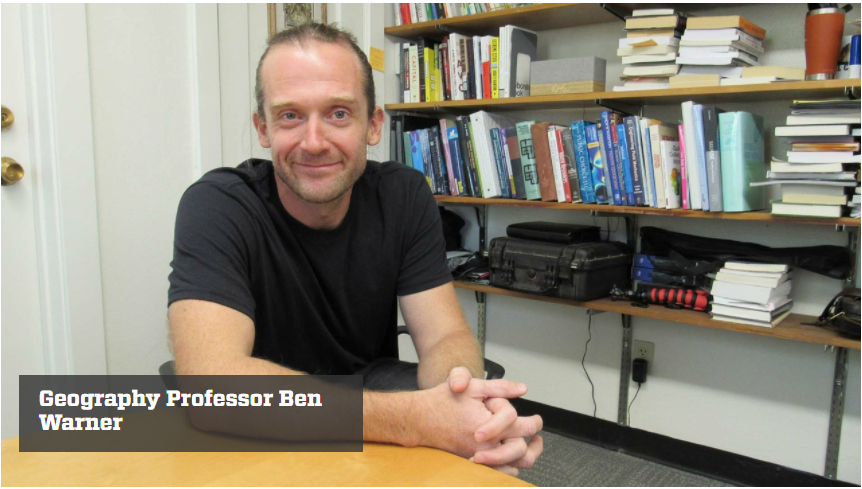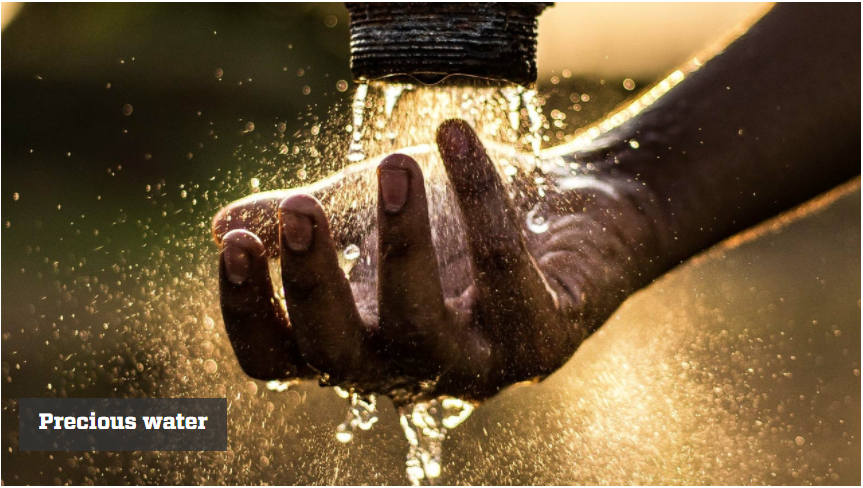UNM research team details deteriorating New Mexico water systems
November 9, 2021 - Mary Beth King


New research paints a picture of small New Mexico water systems grappling with bureaucracy, regulations, lack of money, aging systems, and aging administrators as they struggle to keep clean water flowing in their communities’ faucets.
Benjamin Warner, assistant professor of Geography at The University of New Mexico, along with research scientist Tucker Colvin and graduate assistant Ria Mukerji, recently published research that details their findings about small towns and small drinking water systems (SDWSs) governance in their paper Recentralizing state power in decentralized small drinking water system governance in New Mexico, USA. The trio traveled all over the state from March 2019 to February 2020, interviewing local water authorities, regulators, technical advisors, and others about the issues affecting the systems that service approximately 200,000 New Mexicans, many of them poor and non-white.
Using interviews and demographic data, the team gathered their research and findings into a highly readable format that Warner hopes will be seen by state authorities and anyone else concerned about New Mexico’s rural clean drinking water.
“We found that the state does not offer proactive help or assistance to poor, marginalized communities. Rather, it reactively and punitively enforces its drinking water standards that do little but create additional hardship for communities,” he observed.
In New Mexico, there are 593 community water systems. These are defined as systems that serve at least 15 connections or 25 individuals for at least 60 days per year. Of these, 503 are considered SDWSs. Through a sustained legislative process beginning in the 1970s, the state increasingly transferred responsibility for drinking water provisioning to communities. The most common organizations among these are mutual domestic water consumers’ associations (MDWCAs), cooperatives, non-profits, investor-owned, and municipal.

The New Mexico Environmental Department (NMED) sets out the regulations for drinking water following the federal Safe Drinking Water Act 1974 (amended in 1986 and 1996) and the New Mexico Environmental Improvement Act 1978, which requires the NMED to develop and enforce standardized rules for public drinking water systems. In addition, water quality management in New Mexico is determined by the Water Quality Act 1978. This means that the NMED Drinking Water Bureau is the primary organization that interfaces with SDWSs in the state.
It is up to the individual water systems to meet the state requirements for safe drinking water. However, numerous factors often make it difficult. Many small towns and villages have aging infrastructure such as deteriorating pumps and pipes. Local water authorities are often run by volunteers with varying degrees of expertise. Small towns have small, poor populations that can’t afford repairs.
The dilemma about this process, Warner said, is “What should be the role of the state? Hands-off? As a watchdog, pointing fingers? Or should it step in and help when necessary?”
The research extensively quotes participants in the water systems and the myriad issues and struggles they face trying to keep their operations going.
When asked why water use rates could not cover repairs, one MDWCA manager noted the inability of some community members to pay and observed, “Can you imagine living in a small community with three or four hundred people and you shut off your uncle’s water or, you know, your grandmother’s water? And so, you’re dealing with that and that’s a problem.”
Volunteers and managers described their valiant efforts to keep their systems going.
“I’ll tell you, we had a booster pump go down. One of my colleagues takes [it] in, they’re taking [it] in [on] their dime, you know, gas, and you know, all the way to Albuquerque. Or when I’m doing stuff, I’m doing it on my own. It’s costing [me] money.”
“We were having problems with our pumps and our pump house, actually, the electrical breaker. Literally, I had to be there at night, waking up two, three times at night to go and turn on the pumps manually so that in the morning when every single individual gets up and takes a shower to go to work, there would be water, and that is the responsibility of a [volunteer] manager. It’s tough. It’s really, really tough.”
Much of the MDWCA infrastructure is in disrepair, the most prevalent issue reported being leaky pipes.
“We’re having a lot of leaks with the old system. It’s 73 years old. It’s brittle.”
“This is a water system that has a 50 percent water loss. The system leaks so bad that we’re losing 50 percent of the water that we have to pump out of the ground.”
“And when we finally put a meter by the tank, we were losing about 23 [gallons per minute], and that’s about all the pump could put out. [. . .] There were times when I started looking at this, getting serious about it. I said, ‘Something’s wrong. We can’t even sustain what we’re producing. We’ve got to do something. Where’s the water going?”
Age is an issue for administrators, staff, and volunteers too.
"Finding a good quality operator is extremely difficult. The guy we have is great, but he’s pretty long in the tooth. He’s almost 80 years old. Does he want to be climbing around, digging around out in the rain? No. Where do we find a new one?"
"The young people leave. They come to Albuquerque, Las Cruces, or they leave the state. And so, what we see happening with the rural communities, [they] are smaller, or older people live there on a very fixed income, so you don’t have a lot of people to pay to replace the capital; to replace pumps and drill wells. You don’t have a lot of people who understand, who can navigate the financial part of managing a system or reporting to the state."
Many say their systems are “bandaged” together.
“It’s an archaic system. We’ve got leaks everywhere and we’re running on Band-Aids, now we barely have enough water. As this interviewee suggested, many of these SDWSs cannot access financing to replace infrastructure or upgrade technology, so they patch it with what one interviewee called ‘bandages’. MDWCA managers are forced to use this bandage approach even as they ultimately create more work and cost more money in the long term… “
The paper contends: “The ‘bandage’ approach to maintaining and repairing technology and infrastructure is a product of the state’s unwillingness to assume responsibility for its use in drinking water provisioning while maintaining convoluted and confusing development and financing mechanisms that must be navigated by MDWCAs and some municipal managers.”
“MDWCA managers reported a general inability to communicate with and navigate financing programs,” according to the report. This limited their abilities to replace deteriorating infrastructure, hire personnel or contracting services, and manage complicated accounting processes, legal issues such as water right transfers, or technical design challenges.
Needed projects are often ensnared in bureaucracy and regulations. One manager described how they were required to have a preliminary engineering report before they could be granted access to state funding mechanisms designed to replace infrastructure:
“To be able to replace that well, we have to get an engineering assessment. We have to get it assessed by an engineer. That’s going to cost about 30,000 dollars to do what I already know we need to do. It’s a needless cost on a small water system. If you want a grant you have to get an engineering assessment on your entire system. That’s probably about 50,000 dollars if you want a grant. If I want a grant and you’re making me pay 50,000 dollars just to apply to get a grant! There are no guarantees. Why should I do that?”
This research is part of the larger UNM Grand Challenges initiative that attempts to promote the “sustainability of New Mexico’s economy, environment, and unique social fabric.” Warner said his research team shows that this cannot be done without shedding light on the politics that marginalize particular groups of people and then working to dismantle the social structure that reinforces these politics to replace it with one that promotes equity in natural resource management.
Warner said he welcomed anyone who wishes to read the full report to contact him at bpwarner@unm.edu.
View the original newsroom article here.
